Chris Riley tests the 2022 Nissan X-Trail ST+ with pricing, specs, ride and handling, safety, verdict and everything the over-50 driver needs to know.
Summary: In a crowded category, the Nissan X-Trail has been upgraded to once again provide a viable option, but new models from Korean and Chinese manufacturers are giving buyers even more choice than ever.
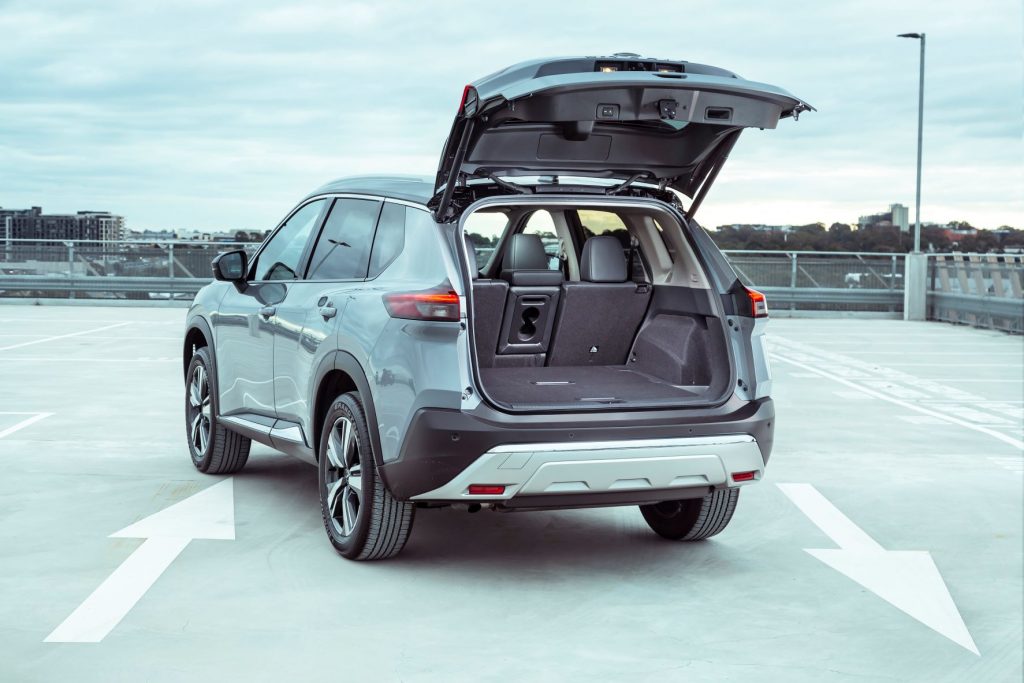
Nissan X-Trail ST+ mid-size SUV
Pricing: $34,140 (ST+, five-seat ST manual from $30,665, plus on road costs). AWD add $2000
Warranty: Five-years, unlimited km, five years roadside assist
Safety: 5-star ANCAP
Engine: 2.5-litre inline four-cylinder normally aspirated petrol
Power: 126kW at 6000rpm
Torque: 233Nm at 4400rpm
Transmission: 7-speed CVT, front-wheel drive
Body: 4690mm (long); 1820mm (wide); 1740mm (high)
Weight: 1458kg
Towing capacity: 1500kg
Wheels: 17-inch alloy
Tyres: 225/65 R17
Ground clearance: 210mm
Turning circle: 11.3m
Fuel tank capacity: 60 litres
Official consumption: 7.9L/100km (91 RON fuel)
Consumption on test: 7.7/100 (1120km)
seniordriver consumption on test: not tested
[review]
It’s been way too long since I last drove a Nissan X-Trail.
After they introduced the CVT transmission, I kinda lost – interest.
But somewhere along the way, I’m happy to say, the X-Trail got its mojo back – the latest one ain’t half bad.
And, with an all-new model about to lob, my timing was perfect because now I can’t wait to see where they’ve gone with it.
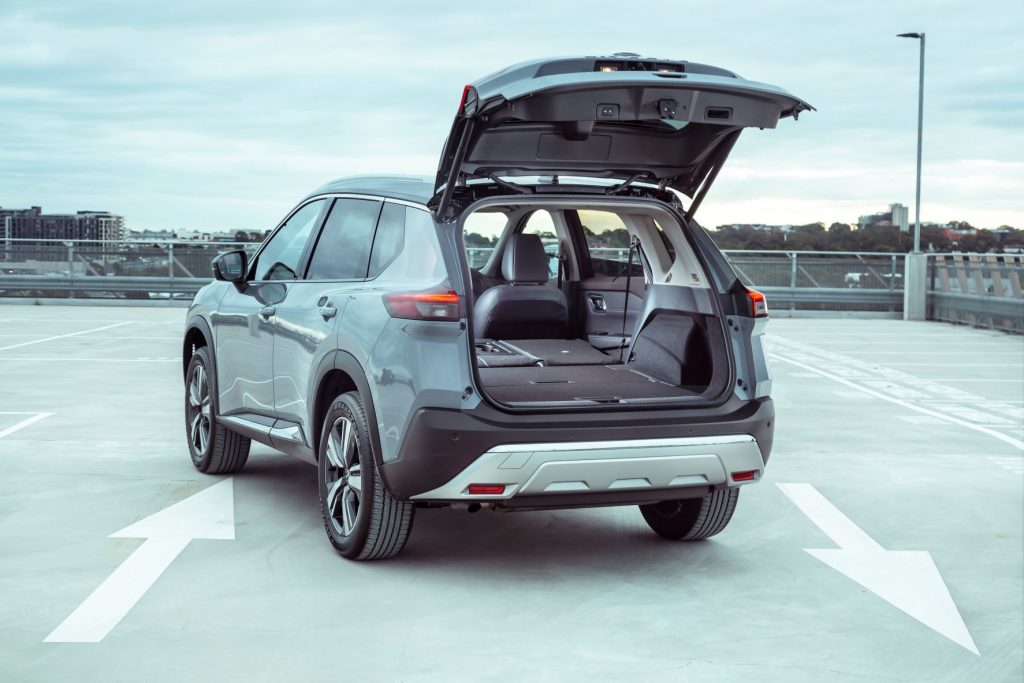
What’s it cost?
Prices for X-Trail start from $30,665 for the five-seat ST manual with a 2.0-litre engine.
Standard kit includes cloth trim, manual adjust air conditioning, 17-inch alloys, intelligent key, push-button start, auto lights, LED daytime running lights, heated and cooled cup holders, folding electric mirrors and a rear roof spoiler.
The flexible seating system is also part of the deal, with a second-row that split folds 40:20:40 as well as sliding and reclining, along with a flexible cargo system in the five-seater.
ST+ adds satellite navigation, front and rear parking sensors and a surround view camera with moving object detection.
Infotainment consists of a 7.0-inch touchscreen, six-speaker audio, Bluetooth, voice recognition, digital radio, Apple CarPlay and Android Auto.
The safety story is a strong one, with a five-star rating, but sadly the entire suite of assistance systems is not standard across the range.
Standard are six airbags, auto emergency braking (AEB) with Forward Collision Warning, rear view camera, vehicle dynamic control, active trace control, active engine brake and body motion control, ABS, EBD and brake assist, hill start assist and hill descent control (the latter with the AWD version).
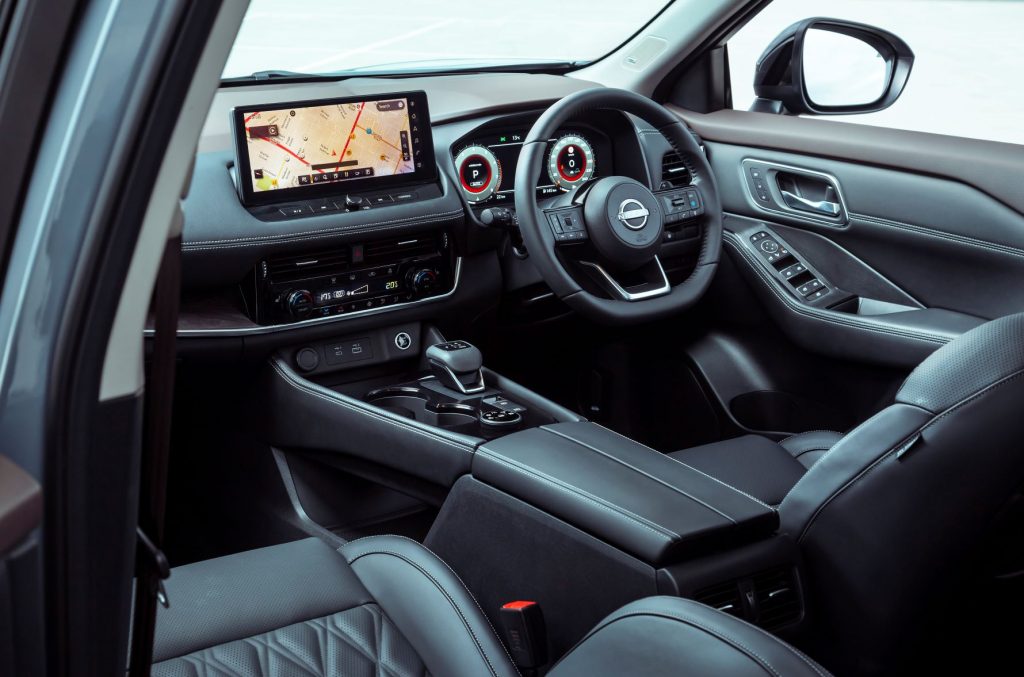
Moving further up the food chain brings Blind Spot Warning and Rear Cross Traffic Alert, but it’s not until you get to the top-of-the-line Ti that it’s all there – Lane Departure Warning, Lane Departure Prevention, AEB with pedestrian detection, Intelligent Cruise Control and High Beam Assist.
Child restraint includes left and right ISOFIX and top tethers plus a tether for the centre position.
Our test vehicle, the recently introduced two-wheel drive ST+, priced from $34,140, adds around-view monitor, moving object detection, front and rear park sensors, plus satellite navigation.
You want all-wheel drive, it’s another $2000 – but quite frankly we wouldn’t bother.
X-Trail is covered by a five-year unlimited kilometre warranty, with five years roadside assistance.
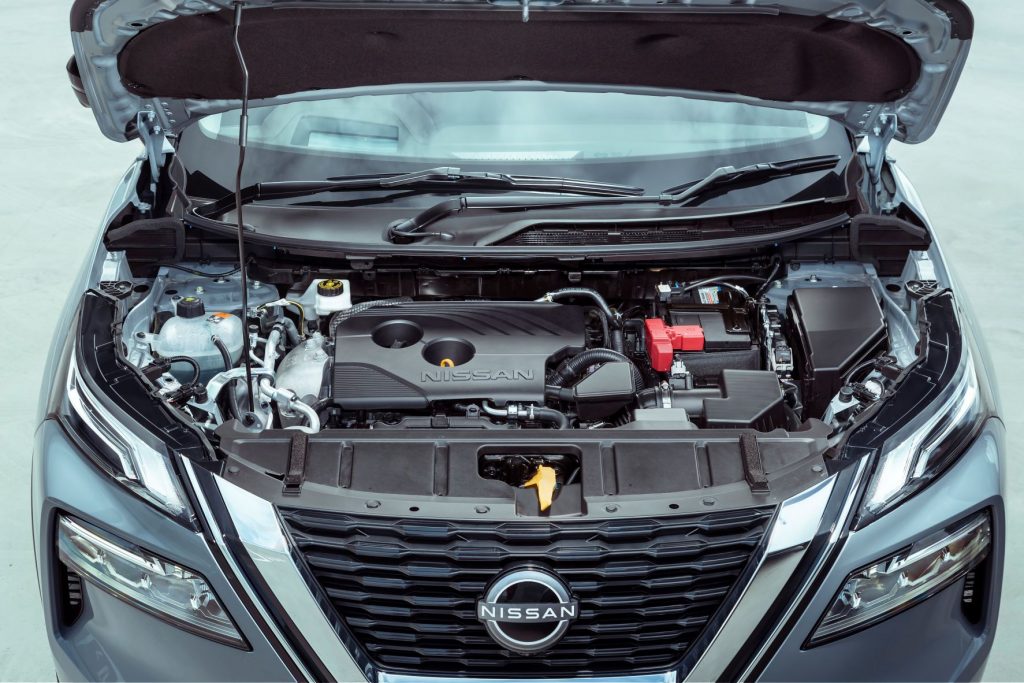
What’s it go like?
ST with manual transmission gets a 2.0-litre petrol engine, with 106kW and 200Nm.
The rest of the range is equipped with a more powerful 2.5-litre petrol engine that puts out 126kW of power and 233Nm of torque, the latter from 4400 revs.
The 2.5, paired with Nissan’s Xtronic CVT with manual mode (MCVT), offers a useful combo of economy and performance, with claimed fuel consumption of 7.9L/100km.
Nissan pioneered CVTs, estimating that if the world switched to this kind of transmission, it would provide a 10 percent saving in fuel overnight – not to mention reduced engine emissions.
Instead of a set range of gears, CVTs operate on a continuously variable principle, designed to deliver the optimum mix of power and efficiency – in theory at least.
In practice the effect was a bit overwhelming for us oldies used to traditional transmissions, as the noise from the engine reached a crescendo, while engine revs remained oddly unmoved.
Younger drivers with no (or different) expectations may not have found the effect so confronting.
Thankfully, CVTs have gotten better since those early days and the latest setup in the X-Trail is for the most part quite acceptable.
As luck would have it, our time in the X-Trail coincided with a trip out west over the Easter break, so we got to have a good long look at the car.
With two kids, small dog, a 40-litre car fridge and gear for a few days on the farm, I was dubious whether the whole lot was going to fit.
It was a tight squeeze, but once we had the two child seats in place, we were able to slide the second row forward which, together with a false removable floor in the cargo area, provided considerably more space.
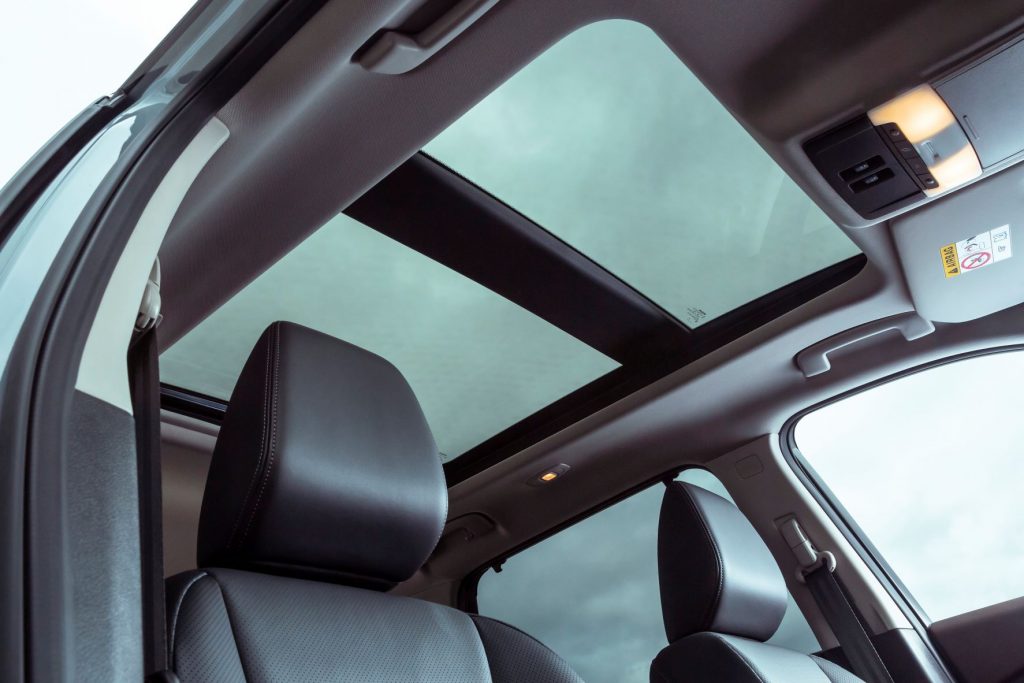
The seats are comfy, the ride is compliant and there are rear air outlets to keep the kids from becoming car sick (but it’s manual-adjust air conditioning).
All good so far, but a twitchy ride, thanks to a grabby stability system, failed to find a friend in my wife who started to feel ill (my four-year-old grandson actually threw up).
Our destination lay four hours northwest of Sydney in the Barrington Tops area of NSW, at the end of a rather remote 20km of dirt.
Although the test car was front-wheel drive, it remained impressively stable, even on what at times was a wet and slippery road, washed out in parts from the recent rains as it threaded its way through the trees.
Both two- and all-wheel drive versions come fitted with Hill Start Assist (HSA), but the AWD also gets Hill Descent Control (HDC).
This automatically applies the brakes when taking off to prevent the driver from rolling backwards on an incline.
While we’re on the subject of the brakes, like the Patrol that we drove previously, X-Trail comes with a foot-operated hand brake.
Not sure what the thinking is here? It’s less of an issue once you become used to it, but why go to all this trouble in the first place?
Apart from Eco mode, the value proposition ST+ has no drive modes nor does it get gear change paddles, but you can change sequentially using the transmission lever, with six gears or steps provided.
In the context of dirt, this provides some much-needed engine braking when easing off the accelerator, lifting the level of control in slippery conditions.
Our test vehicle was fitted with smallish 17-inch wheels, with 225/65 series Yokohama Geolanders, and a space saver spare.
From past experience, we’re not huge fans of the tyres which lack some grip in the wet, but they performed well on this occasion.
They are, however, noisy on coarse chip bitumen.
Inside, it’s nothing flash, but functional and starting to look a bit dated.
The steering wheel is standard vinyl, rather than leather trimmed and the small infotainment screen is embedded in the dash as was the norm five years ago.
Two simple analogue gauges and central driver info display make up the instrument cluster, with the ability to display the car’s speed digitally – but none of the latest eye candy.
The touchscreen offers a rear-view camera, but at 7.0-inches, it’s a trifle small, low-res and difficult to make out at night.
Items missing from the equipment list that we missed include blindspot warnings and adaptive cruise control.
Rated at 7.9L/100km, we were getting 7.7L/100km after 1120km, including city and rural, dirt and bitumen driving.
What we like
- Comfortable seats
- Good fuel consumption
- Sliding rear seat
- Good rear legroom
- Rear air for back seat
What we don’t like
- Manual air conditioning
- Made my wife carsick
- Geolander tyres
- Noisy on coarse bitumen
- Foot-operated handbrake
- No drive modes
- No active cruise
- Screen too small
- No blindspot warnings
What over-50s drivers need to know
Credit where credit is due.
X-Trail is a much improved motor vehicle.
In terms of older drivers, it doesn’t get much better than this.
X-Trail is the right size and the right price, with a good balance of power and economy.
The configurable cargo and second row areas are a major drawcard.
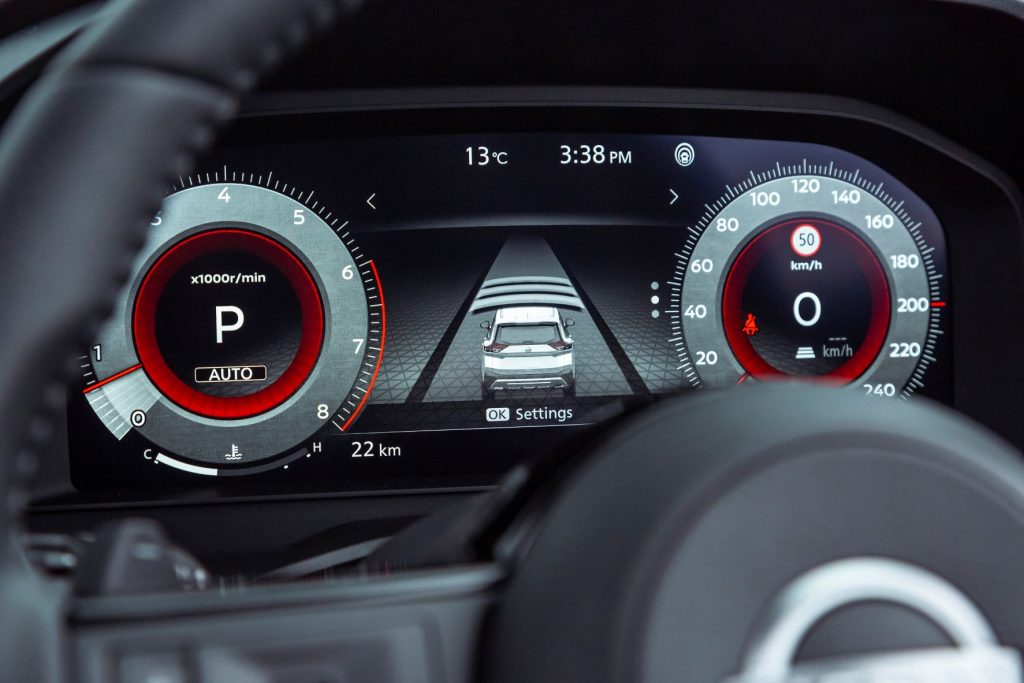
Although the fitout is starting to show its age, it remains functional and offers value for money.
It’s easy to get in and out of with easy-to-use controls, but the foot operated handbrake could put off some people.
Once you get the hang of how it works, it ceases to be a problem (but why is it there in the first place?)
Let’s hope the new X-Trail when it arrives later this year addresses any shortcomings, but these things are never a given.
In the meantime, keep a lookout for deals as this one goes into runout.
This review was prepared by Chris Riley and first appeared on cars4starters, https://cars4starters.com.au/
seniordriver comments
The Nissan X-Trail has been a popular choice for quite a few years, offering (in typical Nissan fashion) good value and enough features to attract buyers.
It’s notable that only the entry-level X-Trail is fitted with the two-litre engine. Other models get the 2.5-litre version. The two-litre engine puts out 106kW and 200Nm, while the 2.5-litre engine delivers a useful upgrade to 126kW and 233Nm.
We keep calling this out, but the lack of safety inclusions on lower-spec models is understandable but frustrating. Cost-conscious buyers will need to stump up extra to get the safety features that are standard on the upper models, and decide for themselves if the extra cost is justifiable (in our minds, it is). It’s something we think ANCAP should be drawing attention to.
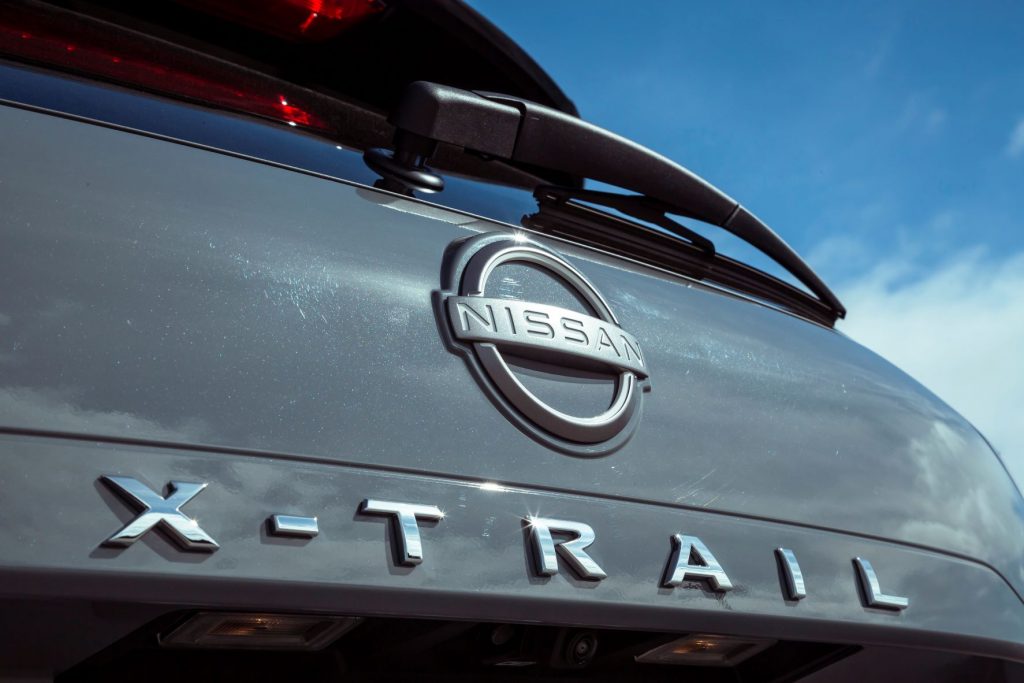
Another observation by tester Chris deserves a comment: all-wheel drive adds $2000, but he thinks it isn’t worth the expense, and his experience on slippery dirt roads bears this out. Again, decide for yourself, but don’t get talked into buying a feature you may not need.
Like Chris, we wish the foot-operated parking brake would be consigned to history. We loved Chris’s oxymoron description as “foot-operated hand brake”! And we can explain why some manufacturers persevere with this illogical and annoying feature: Americans love it, so fitting a foot-operated brake increases appeal in the huge US market.
We thought it would be of value to compare the X-Trail with some of its competitors. This is a crowded class, so there’s no shortage of choice.
We threw in the popular Kia Sportage wagon and a car that we’re fielding plenty of enquiries about, the Haval H6 wagon. Choosing the nearest match, we went with the Sportage SX ($37,000) and the Haval Lux wagon ($36,990), both being mid-range models.
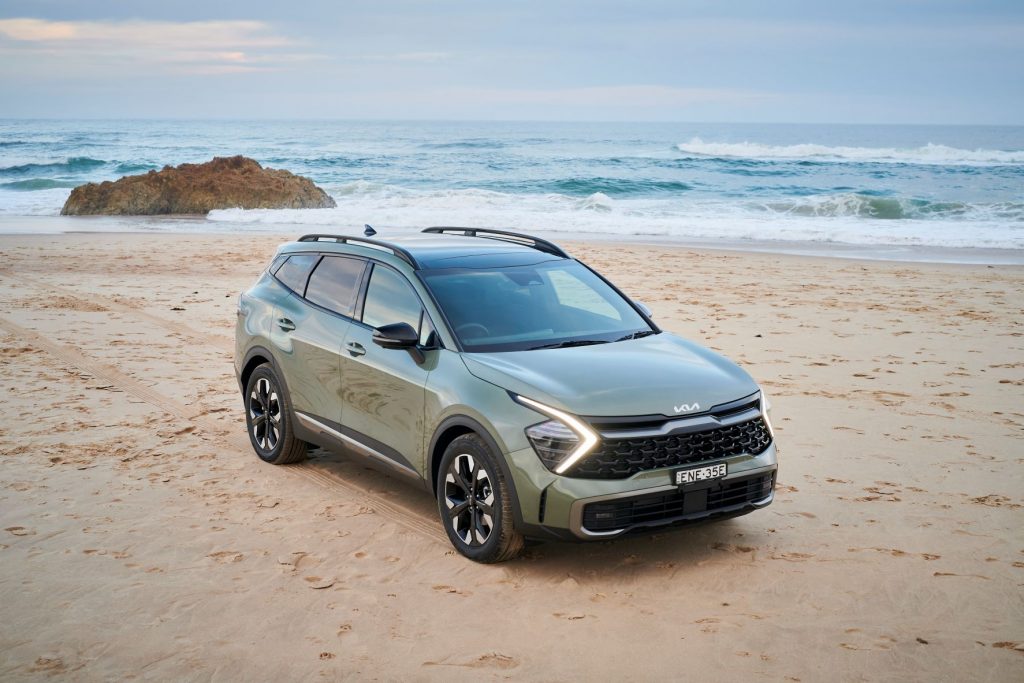
If towing is a priority, it’s a bit of a surprise to learn that the 2.5-litre Nissan is limited to 1500kg towing capacity while the two-litre Kia, thanks to its meagre 192Nm of torque, is rated at 1650kg and the two-litre Haval up to 2000kg, a direct consequence of the Haval’s impressive 320Nm of torque.
The Nissan is also short-changed in the warranty department, too, with both the others offering seven-year warranties. Servicing for the Nissan is, like the others, every 12 months, but after 10,000km (whichever comes first) while the Kia and Haval suggest every 15,000km.
In power terms, as in torque, the Nissan sits in the middle with 126kW; the Kia is 115kW and the Haval a substantial 150kW. The Nissan is the only one that gets a CVT; the others offer proper automatic gearboxes – sports automatic in the Kia, sports dual clutch auto in the Haval.
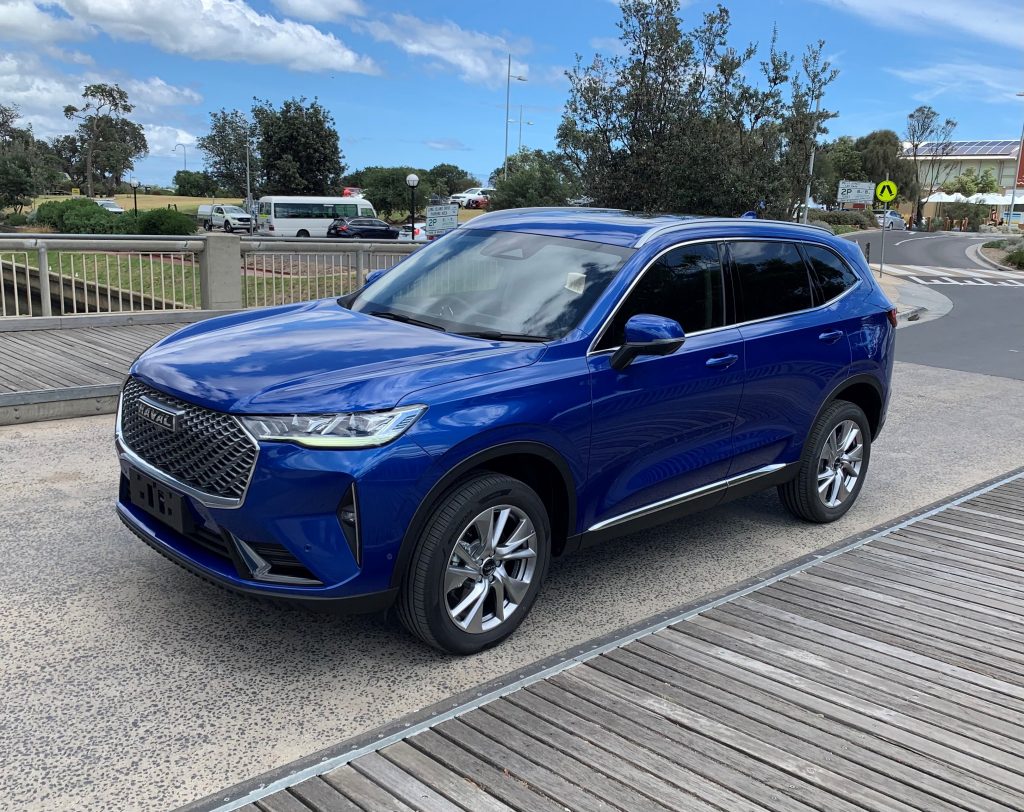
If range is important to you, note the Kia’s relatively small 54-litre fuel tank and to make things worse, it’s also the thirstiest at 8.1L/100km. The Nissan’s 7.0L/100km and 60-litre tank leave the Haval clearly in top position with a 61-litre tank and a frugal 7.4L/100km. As we’ve pointed out before, an engine that doesn’t have to work as hard can deliver measurable fuel savings over a harder-working less-powerful engine.
We’d also suggest comparing with the Hyundai Tucson (two-litre, from $34,900), Mazda CX-5 (2.5-litre Maxx Sport, from $38,140), Renault Koleos (Zen, 2.5-litre, $37,800) and, if budget is a consideration, the MG HS (Excite, 1.5-litre, from $34,990) and Mahindra XUV 500 (1.5-litre, from $27,990).
